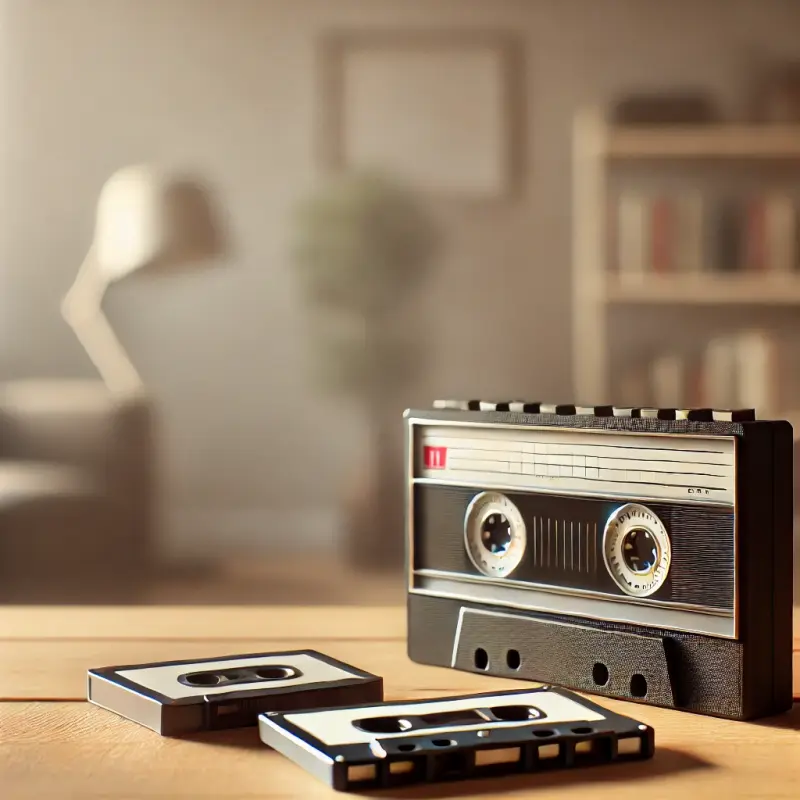The History of the First Cassette Players: How They Made Music Mobile
The way we enjoy music today—with millions of songs accessible in the palm of our hand—owes a significant debt to the innovations of the past. Long before digital streaming, Bluetooth speakers, and even compact discs, there were cassette players. These devices introduced a groundbreaking concept to the world: the ability to carry your favorite music wherever you went. But how did this innovation come to be, and why did it have such a transformative impact on music culture? This article explores the origins of the cassette player, tracing how it revolutionized the way people experience music.

The Early Days of Magnetic Tape
Before cassette players became household items, the idea of magnetic tape was already in motion. The technology traces its roots back to the late 1920s and 1930s, when early pioneers experimented with magnetizing audio signals onto tape reels. However, these initial devices were large and cumbersome, suited only for professional environments like recording studios and broadcasting stations. The magnetic tape offered a significant improvement in sound quality compared to earlier methods like phonograph records, but its potential for portability was yet to be realized.
The Advent of the Compact Cassette
The turning point came in 1963 when Philips, the Dutch electronics company, unveiled the compact cassette. This invention was designed as a practical, smaller alternative to reel-to-reel tapes, which required manual operation and were anything but portable. The compact cassette was a sleek, rectangular cartridge containing two miniature reels of magnetic tape, encased in durable plastic. Its design not only made it easy to use but also reliable, paving the way for wider consumer adoption.
Making Music Portable: The First Cassette Players
The development of compact cassettes naturally led to the demand for devices that could play them conveniently. In the late 1960s, the first cassette players were bulky and mostly found in home entertainment systems or installed in cars. These early models were revolutionary in their own right but lacked true portability. People could listen to their favorite music while driving or in their living rooms, but the concept of taking music on the go was still in its infancy.
The Rise of the Walkman Era
A seismic shift occurred in 1979 when Sony introduced the Walkman, the first truly portable cassette player. This sleek, battery-operated device could be held in one hand and came with lightweight headphones, making personal listening a reality. Suddenly, music became an individual experience rather than a communal one. You could jog with music in your ears, lose yourself in a favorite album during a train commute, or relax to a soothing playlist while lounging in the park.
The Walkman not only redefined portability but also ushered in a cultural revolution. It changed how people exercised, traveled, and even socialized, providing an unprecedented level of freedom and personalization. The device was an instant success, selling millions of units worldwide and becoming a symbol of the 1980s and 1990s music culture.
Impact on the Music Industry
Cassette players didn't just change how music was consumed; they also impacted the music industry itself. The ease of recording and copying cassettes introduced a new level of accessibility. People could create mixtapes for friends, share recordings of live performances, or create compilations of their favorite tracks. While this raised concerns about piracy, it also contributed to the culture of music sharing and discovery that still resonates in today’s streaming era.
Moreover, cassette players allowed artists and producers to experiment with sound in ways that were previously unimaginable. Independent musicians could create home recordings without the need for expensive studio time, democratizing the process of music production and distribution.
The Transition to Digital and the End of an Era
As with many groundbreaking technologies, the dominance of cassette players eventually waned with the advent of digital formats. By the 1990s, compact discs (CDs) began to overshadow cassette tapes, offering superior sound quality and durability. The rise of MP3s and streaming platforms in the early 2000s cemented the end of the cassette era.
Despite this, the nostalgia for cassette players remains strong, and they have seen periodic resurgences among collectors and enthusiasts. Many still treasure their mixtapes and remember fondly the tactile experience of pressing "Play," "Rewind," or "Fast Forward."
Conclusion
The story of cassette players is more than just a tale of technological advancement; it’s a narrative about how people connect with music. By making music portable, cassette players opened up new avenues for personal expression, reshaping how we experience our favorite songs. Today, even in a world dominated by streaming, the legacy of the cassette player lives on as a reminder of a time when music became something you could hold in your hand and take with you anywhere.
Articles
Sign up for our alerts to get the most recent and engaging articles delivered straight to your email.